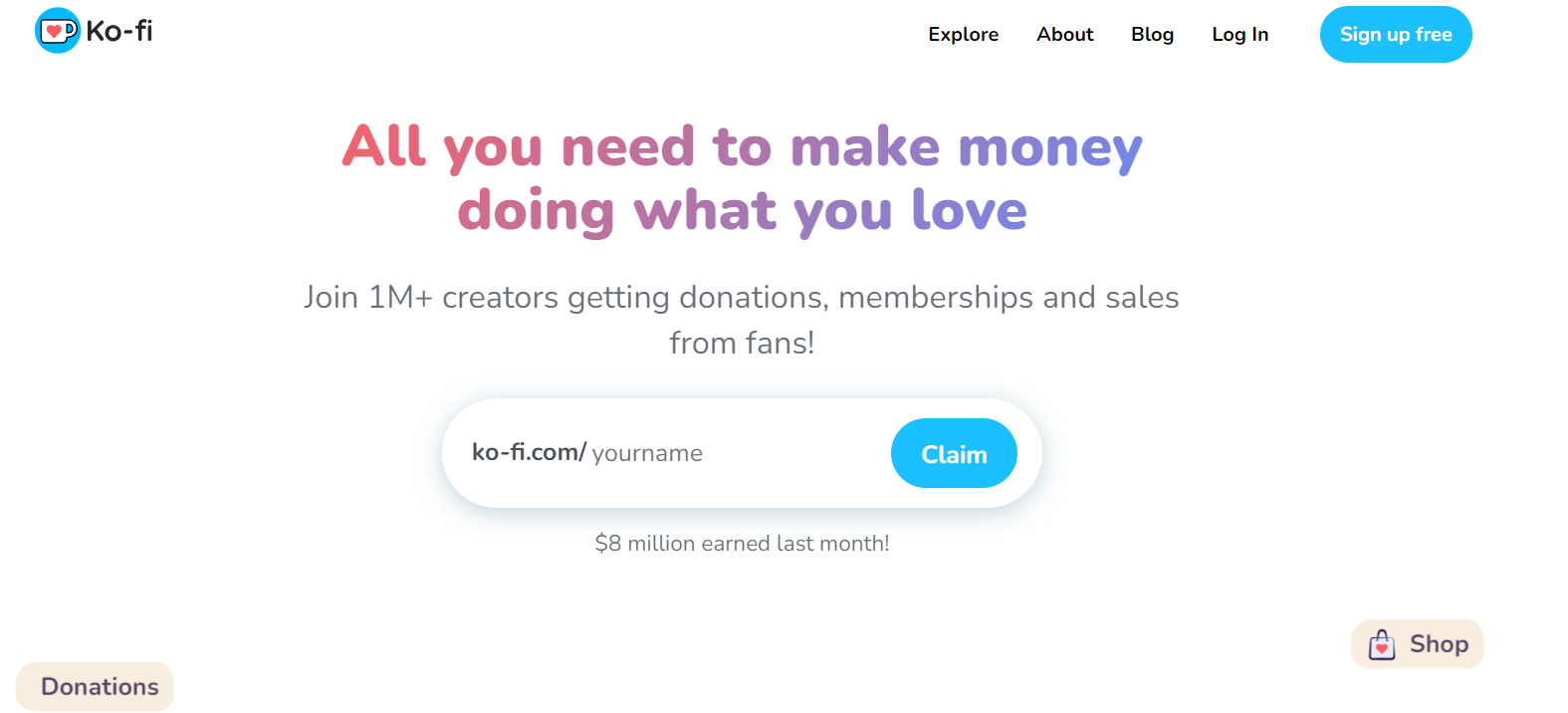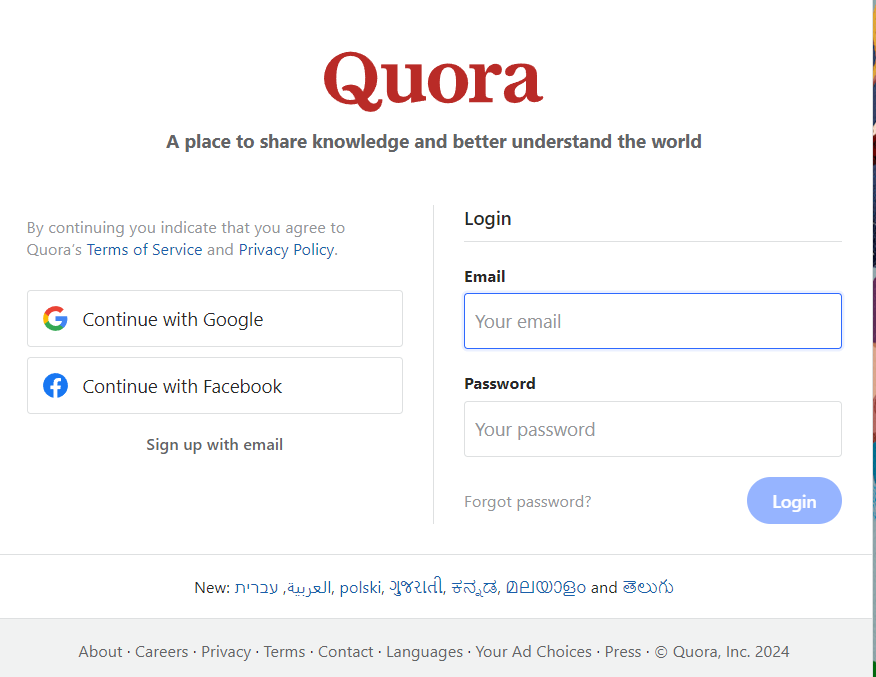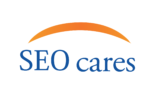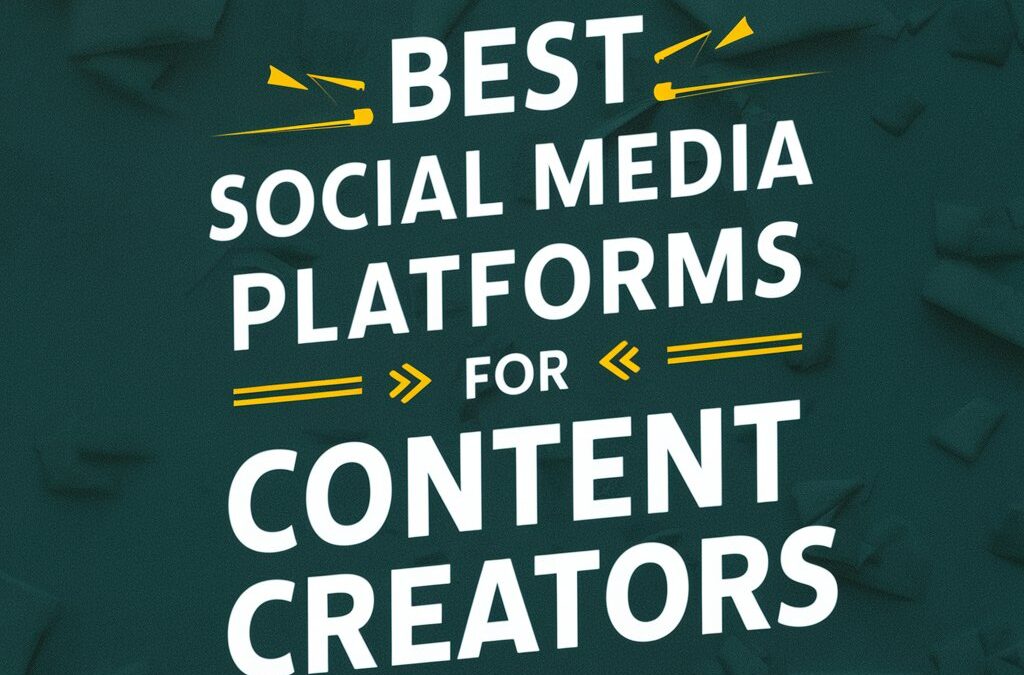Social media platforms have revolutionized how content creators engage with audiences and monetize their work.
For content creators, understanding the nuances of each platform is crucial to developing an effective content strategy.
Different platforms attract different audiences and offer varying monetization opportunities, making it essential to tailor your content to the right audience on the right platform.
In this article, we’ll explore the best social media platforms for content creators, providing insights into their ideal uses, monetization options, and audience demographics.
Best Social Media Platforms for Content Creators
Below are the best social media platforms for content creators you can use for free to build your audience.
YouTube:
YouTube is the premier platform for video content, offering creators the ability to upload and share videos on virtually any topic.
From vlogs and tutorials to reviews and live streams, YouTube’s extensive reach and robust monetization options make it a top choice for content creators.
With ad revenue, channel memberships, Super Chats during live streams, and merchandise shelf integration, creators have multiple ways to earn income.
Additionally, YouTube’s algorithm helps discoverability, enabling videos to reach a global audience.
The platform also provides detailed analytics to help creators understand their audience and optimize their content.
Overview:
Ideal for: Video content (vlogs, tutorials, reviews, etc.).
Monetization: Ad revenue, sponsorships, channel memberships, merchandise.
Audience: Wide-ranging, global reach.

Instagram:
Instagram is a visually-driven platform perfect for sharing photos, short videos, and stories.
Content creators can leverage features like IGTV for longer videos, Reels for short, engaging clips, and Stories for more ephemeral content.
Instagram’s shopping feature allows creators to tag products, making it easy to monetize posts through affiliate marketing and sponsored content.
With a predominantly younger audience, Instagram is ideal for creators in fashion, lifestyle, and visual arts.
The platform’s algorithms and hashtags help increase discoverability, while insights tools offer valuable data on audience engagement and growth.
Overview:
Ideal for: Photos, short videos, stories, reels.
Monetization: Sponsored posts, IGTV ads, shopping features.
Audience: Younger demographic, visual-focused.

TikTok:
TikTok has rapidly become a favorite among content creators for its short-form, highly engaging video content.
Known for viral trends and challenges, TikTok provides a creative space for everything from dance and comedy to educational content.
The platform’s algorithm promotes content widely, offering creators the chance to reach millions overnight.
Monetization options include the TikTok Creator Fund, brand partnerships, and live gifts from followers.
With its predominantly Gen Z audience, TikTok is ideal for creators looking to engage with a younger, trend-savvy demographic.
TikTok also offers robust editing tools and a music library to enhance content creativity.
Overview:
Ideal for: Short, engaging videos.
Monetization: Creator Fund, brand partnerships, live gifts.
Audience: Primarily Gen Z, viral trends.

Twitch:
Twitch is the leading platform for live streaming, particularly popular among gamers but also expanding to include music, talk shows, and creative content.
Creators can earn money through subscriptions, donations, ad revenue, and brand sponsorships.
Twitch’s interactive features, like chat and emoticons, foster a strong sense of community and real-time engagement.
The platform’s partnership and affiliate programs provide additional monetization opportunities and support for growing channels.
With its dedicated user base, Twitch is ideal for creators who thrive on live, interactive content and want to build a loyal audience.
Overview:
Ideal for: Live streaming (gaming, music, talk shows).
Monetization: Subscriptions, donations, ads, sponsorships.
Audience: Gaming enthusiasts, live content consumers.

Facebook:
Facebook offers a versatile platform for content creators, supporting a wide range of content types including videos, live streams, and written posts.
With its massive global user base, Facebook provides excellent reach and engagement opportunities.
Monetization options include ad breaks in videos, fan subscriptions, and branded content.
The platform’s robust analytics tools help creators understand their audience and optimize their content strategy.
Facebook’s groups and pages also facilitate community building, allowing creators to foster direct connections with their audience.
Additionally, features like Facebook Watch enhance discoverability and provide additional content distribution channels.
Overview:
Ideal for: Diverse content types (videos, live streams, posts).
Monetization: Ad breaks, fan subscriptions, brand collaborations.
Audience: Older demographic, wide-ranging interests.

X (formerly Twitter):
X (formerly Twitter) is an excellent platform for content creators who thrive on real-time interactions and brief, impactful updates.
With its character limit, X (formerly Twitter) encourages concise communication, making it ideal for sharing quick thoughts, news, and engaging in conversations.
Creators can leverage X (formerly Twitter) threads for detailed content, while hashtags and trending topics boost visibility.
Monetization options include Sponsored Tweets, Super Follows, and Tips, allowing creators to earn directly from their followers.
X’s analytics provide insights into engagement and audience demographics, helping creators tailor their content.
The platform’s conversational nature makes it perfect for building a direct, interactive relationship with followers.
Overview:
Ideal for: Short updates, real-time interactions, threads.
Monetization: Sponsored tweets, Super Follows, tips.
Audience: News-oriented, conversational.

LinkedIn:
LinkedIn is the go-to platform for professionals and B2B content creators.
It’s ideal for sharing industry insights, professional achievements, and thought leadership content.
Creators can publish articles, share updates, and engage with a network of professionals.
LinkedIn’s audience is typically more mature and career-focused, making it a great place for creators in business, technology, and other professional fields.
Monetization comes through Sponsored Content, LinkedIn Learning courses, and professional services.
The platform’s analytics tools help creators understand their reach and engagement.
LinkedIn also fosters networking opportunities, allowing creators to connect with industry leaders and potential clients.
Overview:
Ideal for: Professional content, industry insights.
Monetization: Sponsored content, LinkedIn Learning.
Audience: Professionals, B2B.

Pinterest:
Pinterest is perfect for content creators in the DIY, fashion, home décor, and food niches.
The platform’s visually-driven format allows creators to share high-quality images, infographics, and tutorials.
Pins can link back to websites or blogs, driving significant traffic.
Creators can monetize through Sponsored Pins and affiliate marketing, leveraging Pinterest’s shopping features.
With a predominantly female audience, Pinterest is ideal for creators targeting women.
The platform’s algorithm helps content get discovered based on user interests, ensuring a long shelf life for Pins.
Pinterest Analytics provides insights into Pin performance and audience behavior, aiding in content optimization.
Overview:
Ideal for: Visual inspiration (DIY, recipes, fashion).
Monetization: Sponsored pins, affiliate links.
Audience: Creative and DIY enthusiasts.

Snapchat:
Snapchat is a unique platform for sharing short, ephemeral content.
Ideal for younger audiences, Snapchat allows creators to share photos and videos that disappear after being viewed.
Features like Stories, Discover, and Snapmap offer various ways to engage with followers.
Creators can monetize through Sponsored Lenses, Geofilters, and Snap Ads.
Snapchat’s playful and casual format encourages authentic, behind-the-scenes content.
The platform’s interactive features, such as polls and AR filters, enhance engagement.
While it’s primarily used for casual interactions, Snapchat’s creative tools and younger demographic make it a valuable platform for certain types of content creators.
Overview:
Ideal for: Short, ephemeral content.
Monetization: Sponsored lenses, Discover content.
Audience: Younger demographic, casual content.

Patreon:
Patreon is a membership-based platform that allows content creators to earn a steady income directly from their most dedicated fans.
Creators offer exclusive content, behind-the-scenes access, and other perks to subscribers, known as patrons, who pay a monthly fee.
This model works well for artists, writers, podcasters, and other creators who produce consistent, high-quality content.
Patreon supports various media formats, including video, audio, and written content.
The platform also offers integration with other social media channels, making it easy to promote Patreon-exclusive content.
Analytics and community tools help creators manage their patron base and optimize their offerings.
Overview:
Ideal for: Membership-based exclusive content.
Monetization: Monthly subscriptions from patrons.
Audience: Dedicated fans and supporters.
Reddit:
Reddit is a diverse platform with countless communities (subreddits) dedicated to specific interests.
Content creators can share links, text posts, and multimedia content tailored to niche audiences.
Reddit’s upvote/downvote system helps quality content gain visibility.
For monetization, creators can use the platform for brand collaborations, sponsored posts, and promoting their own products or services.
Reddit Ads offer additional promotional opportunities.
Engaging with specific communities allows creators to build a loyal following and gain insights from direct interactions.
The platform’s anonymity fosters candid discussions, making it ideal for authentic engagement and feedback.
Overview:
Ideal for: Niche communities and in-depth discussions.
Monetization: Brand collaborations, sponsored posts, and Reddit Ads.
Audience: Enthusiastic, topic-focused users.

Medium:
Medium is a platform for writers and bloggers to share long-form articles and stories.
Content creators can publish articles on various topics and earn money through the Medium Partner Program, which pays based on reading time and engagement.
Medium’s built-in audience and recommendation system help new writers gain visibility.
Creators can also build a following and interact with readers through comments and highlights.
The platform’s clean, distraction-free interface enhances the reading experience.
Medium is ideal for writers looking to monetize their work and reach a dedicated audience interested in high-quality, in-depth content.
Overview:
Ideal for: Long-form articles and stories.
Monetization: Medium Partner Program based on reading time and engagement.
Audience: Readers seeking high-quality, in-depth content.

Ko-fi:
Ko-fi is a platform that allows content creators to receive support from their fans through one-time donations or monthly memberships.
Creators can share content, set goals, and offer exclusive perks to supporters.
Ko-fi takes no fees from donations, allowing creators to keep all their earnings.
The platform is ideal for artists, writers, and creators who want to receive direct support without the pressure of a subscription model.
Ko-fi also integrates with other platforms, making it easy to promote and receive support across different channels.
Analytics tools help creators track their earnings and supporter engagement.
Overview:
Ideal for: Direct support and small donations.
Monetization: One-time donations or monthly memberships.
Audience: Dedicated fans willing to support creators financially.

Discord:
Discord is a chat platform popular among gamers but increasingly used by various content creators to build communities.
Creators can set up servers with multiple channels for text, voice, and video chat.
It’s ideal for fostering direct interaction and community building.
Monetization options include subscriptions through Discord’s Nitro service and server boosts.
Creators can also use Discord to host events, share exclusive content, and engage with their audience in real-time.
The platform’s flexibility and strong community focus make it a valuable tool for creators looking to build and maintain a dedicated fanbase.
Overview:
Ideal for: Building and engaging with communities.
Monetization: Subscriptions through Discord Nitro and server boosts.
Audience: Active, interactive users looking for real-time communication.

Canva:
Canva is primarily a graphic design tool but also functions as a social media platform for creators.
It allows users to create visually stunning graphics, presentations, and social media posts with ease using its drag-and-drop interface.
Canva’s extensive library of templates, fonts, and images makes it ideal for creators looking to produce high-quality visual content quickly.
Creators can share their designs directly from Canva to various social media platforms or collaborate with team members on projects.
While Canva itself is not a direct monetization platform, the high-quality content it enables can boost engagement and revenue on other social media channels.
Overview:
Ideal for: Creating visually appealing content.
Monetization: Selling designs, promoting products, and using premium features.
Audience: Content creators, marketers, and small business owners needing easy-to-use design tools.

Quora:
Quora is a question-and-answer platform where people can ask and answer questions on any subject.
Content creators can leverage Quora to establish themselves as experts by providing insightful answers and linking to their own content.
It’s an excellent way to drive traffic to blogs, videos, or other content by answering relevant questions in your niche.
Quora’s upvote and downvote system helps highlight quality responses, increasing visibility.
Monetization options include sponsored content and brand partnerships.
By engaging with the community and consistently providing valuable answers, creators can build credibility and attract a dedicated following.
Overview:
Ideal for: Establishing expertise through Q&A.
Monetization: Sponsored content and brand partnerships.
Audience: Knowledge seekers and individuals interested in specific topics.

HubSpot:
HubSpot is a comprehensive marketing, sales, and service platform designed to help businesses attract, engage, and delight customers.
For content creators, HubSpot offers tools for content management, social media scheduling, email marketing, and analytics.
Its CRM system helps track interactions and optimize marketing strategies.
HubSpot’s content management system (CMS) supports blogging, landing pages, and SEO optimization, allowing creators to manage their online presence effectively.
The platform’s reporting and analytics provide insights into content performance and audience behavior.
HubSpot’s all-in-one approach simplifies managing and scaling content strategies for creators and businesses alike.
Overview:
Ideal for: Comprehensive content and marketing management.
Monetization: Inbound marketing strategies, lead generation, and sales optimization.
Audience: Businesses and marketers looking to attract, engage, and delight customers.

Final Verdict:
Social media offers a diverse array of platforms, each tailored to different types of content and audiences.
From long-form videos on YouTube to short, engaging clips on TikTok, and from visually-driven Instagram posts to in-depth articles on Medium, there’s a platform suited for every content creator’s needs.
By understanding the unique features, monetization opportunities, and audience demographics of each platform, creators can make informed decisions on where to focus their efforts.
The key to success in social media content creation lies in choosing the right platform that aligns with your content type and audience preferences.
Whether you’re producing video, images, or text-based content, selecting the appropriate platform will help you maximize your reach and engagement with the right audience.
Frequently Asked Questions:
Which social media is best for content creation?
The “best” social media platform for content creation depends largely on the type of content you create and your target audience.
Here’s a breakdown:
- Video content: YouTube, TikTok, Instagram Reels
- Image-based content: Instagram, Pinterest
- Written content: LinkedIn, Twitter, Facebook
- Interactive content: TikTok, Instagram, Snapchat
What is the most profitable social media platform for content creators?
YouTube is generally considered the most profitable social media platform for content creators.
It offers multiple revenue streams, including:
- Ad revenue
- Channel memberships
- Super Chat
- Merchandise
- Brand sponsorships
What is the highest paying social media platform for content creators?
While it’s difficult to pinpoint a single “highest paying” platform, YouTube and Instagram often offer significant earning potential for top creators.
However, earnings can vary widely based on factors mentioned above.
Which social media is best to earn money?
Again, the best platform to earn money depends on your content and audience.
However, platforms that offer multiple monetization options, such as YouTube, Instagram, and TikTok, tend to be more lucrative.
Which social media pays the most for views?
YouTube is generally known for paying the most per view, but it’s important to note that:
- Ad revenue varies based on factors like viewer location, ad competition, and video topic.
- Other platforms like TikTok offer different monetization models (like creator fund, brand deals) that can also be profitable.
More content on social media:
How to Get 1000 Followers on Twitter (X)? (Free & Fast)
How to Get 1k followers on Instagram in 5 minutes?
How to Get 1k Followers on TikTok in 5 Minutes?


